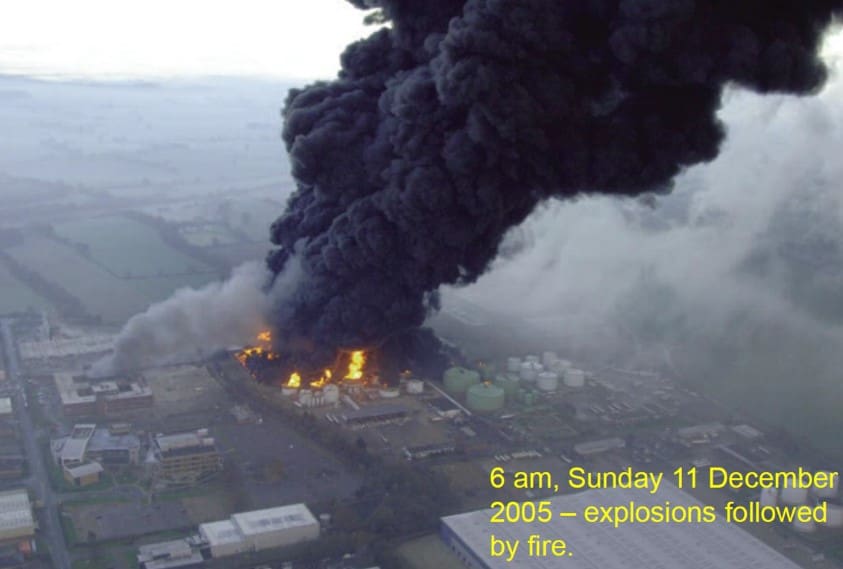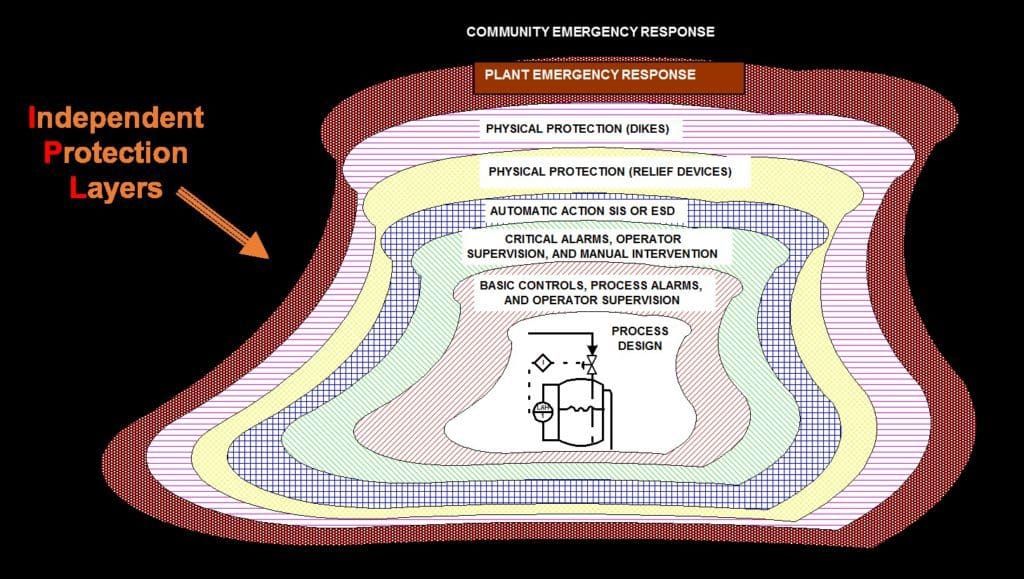In the early hours of Sunday December 11, 2005, several explosions occurred at the Buncefield Oil Storage Depot in the UK. At least one of the initial explosions was massive, engulfing much of the site in a blazing inferno. Over 40 people were injured; but fortunately, there were no fatalities. Significant damage occurred to both commercial and residential properties in the vicinity and a large area around the site was evacuated on the advice of the emergency services. The fire burned for several days, destroying most of the site and emitting large clouds of black smoke into the atmosphere. Poor facility safety is costly in terms of downtime, insurance premiums, brand reputation, and, in the case of this fire, governmental fines. Five companies cumulatively paid multi-million-pound fines as a result.

An oil depot is an especially hazardous form of warehouse. The standards and processes involved to ensure safety in these facilities may be too onerous for many industries. Nevertheless, understanding the most rigorous safety processes, and being able to appropriately adopt them to less hazardous facilities, is a worthwhile exercise.
Any industrial organization should be able to answer the following question to help prevent and mitigate these types of incidents:
- Do we understand what could go wrong?
- Do we know what systems are in place to prevent this from happening?
- Do we have the information to assure us that these systems are working effectively?
- What is my role?
Scott Mourier, Global Process Automation Safety System Subject Matter Expert for Dow-Dupont presented on this topic at the ARC Industry Forum in Orlando, Florida in February.
Answering the Questions
Mr. Mourier opened his presentation with a review of the Buncefield incident. In reviewing the investigative findings, he mentioned that several level instruments installed at the site failed to notify operators that the tank was overfilling. It wasn’t until members of the public noticed the vapor cloud that the employees were alerted. Training and management deficiencies were identified as well as.
Mr. Mourier mentioned an IEC standard – a technical standard which sets out practices for Safety Instrumented Systems. One of the requirements of this standard mandates hazard and risk assessments on the materials, processes, and equipment installed at an industrial site. This should result in a description of each hazardous event identified and the factors that could contribute to it; a description of the likelihood and consequence of each hazardous event; and determine additional risk reduction necessary to achieve the required functional safety.
He followed by discussing the Layers of Protection Analysis, a risk analysis tool for evaluating the effectiveness of Independent Protection Layers to reduce the likelihood or severity of an undesirable event. Risk, he said, was a function of the consequence of an event, multiplied by the frequency that the event could occur.

Mr. Mourier presented the protection “onion” often used to depict the independent protection layers. He then highlighted the difference between the systems used for running normal day-to-day operations and safety systems that are designed to catch a process when it strays too far of normal operating parameters.
He then introduced the concept of the safety lifecycle. The IEC standard is designed to ensure that the safety system is properly designed, installed and commissioned, tested, managed, and maintained. Further, a facility should be able to manage the process hazards during maintenance activities on the safety system.
To highlight the ongoing work a facility must perform to maintain its safety systems to ensure their reliability, Mr. Mourier stressed that, “You get what you ‘inspect’, not what you ‘expect’!”
What is Your Role in Facility Safety?
To answer this, Mr. Mourier again pulled from the standards. It is critical that the people and departments that are responsible for carrying out and reviewing each of the safety lifecycle phases be identified and informed of the responsibilities assigned to them and that these people are competent to carry out the activities for which they are accountable.
In conclusion, despite a thorough set of standards, some results from a 2017 survey conducted by Petrotechnics shows that a poor company culture can trump adherence to safety standards. Survey participants were asked why incidents and accidents still happen. The anonymous answers included: “Production takes priority over safety, which often leads to shortcuts and safety incidents, despite corporate safety policies;” and “Corporate lip service to (safety) policies that are not backed up with effective and efficient planned preventative maintenance.”
Even though many companies say about that “safety comes first,” process safety fails to receive the attention it deserves. ARC research indicates that progress in this area is slow and about 98 percent of process industry companies need to improve their safety cultures and board-level focus.

Mark Sen Gupta has worked for companies like Mobay Corporation(Bayer), Honeywell, Plant Automation Services, CygNet Software (Weatherford), and Invensys (Schneider Electric) in various engineering and marketing roles. These have provided Mark with nearly 30 years of expertise in safety and process control, SCADA, and Industrial IT applications. He actively consults with suppliers and end users in these areas.
















